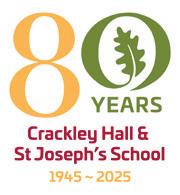

A History of Crackley Hall School and St Joseph’s School

Heads of St Joseph’s and Crackley Hall

1940s - 1958
Sister Mary Philip
1958 - 1981
Sister Mary Patrick
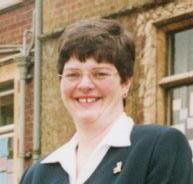
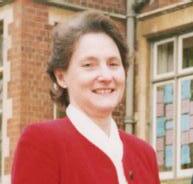
2001 – 2008
Jane le Poidevin
1999 - 2001
Heather Harris

2008 – 2011
Paul Ryan
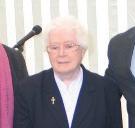
1981 - 1991
Sister Philomena Bowers
1991 - 1994
Frances Rimmer
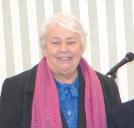
1994 - 1999
Lesley Cox

2011 to date
Rob Duigan
Welcome
This year we are celebrating our 80th Anniversary, recognising the presence of a school on the Crackley Hall site since 1945, when it was known of course as St Joseph’s Convent School.
As part of our 80th Anniversary we, as a school community, have been delving into the school’s past and exploring the changes across the decades. Our archivist, Jo Wong, with help from former pupils and staff, has kindly updated the history of St Joseph’s School and Crackley Hall School. We are enormously grateful for all the memories, communications and photographs that were submitted.
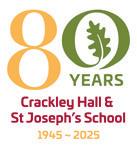

On Saturday 4 October, we will celebrate our anniversary with an Open House and we are delighted that so many former pupils and members of staff are joining us. We hope that the Open House affords you the opportunity to rekindle old friendships, relive fond memories and reminisce.
You’ll be pleased to know that the school is thriving, and the future is looking very bright. Indeed, our most recent ISI Inspection and latest Good School Guide Review both endorsed the school and all that we do. Crackley Hall School continues to grow in numbers and in strength on all fronts and we are delighted that past pupils and friends can share in this.
Thank you so much for joining us as we walk down memory lane and celebrate the achievements over the years that build on the legacy begun by the Sisters of Mercy.
My sincere thanks go to all the staff involved in co-ordinating our 80th Anniversary celebrations on our behalf.
Robert Duigan Headmaster
Photographs sourced from the Foundation Archives and the Union of the Sisters of Mercy GB Archives.

In the Beginning
A Significant Year
The year 1945 was an important one. On the world stage, Allied leaders met at Potsdam and Yalta, VE and VJ days were declared, and the San Francisco Conference established the United Nations. Closer to home, Clement Attlee won the general election by a landslide and brought Winston Churchill’s period as Prime Minister to an end. Furthermore, Benjamin Britten’s opera Peter Grimes was first performed at Sadler’s Wells, David Lean’s Brief Encounter was released to the cinemas and George Orwell’s Animal Farm appeared in print.
This year also witnessed the creation of a convent and school at Crackley Hall, Kenilworth. It is a story of determination, co-operation and, above all, an expression of one community’s Christian faith through education.
The Foundation of St Joseph’s Convent
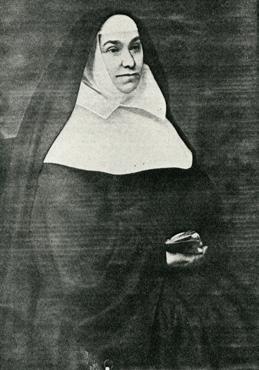
Sr Mary Elizabeth Watkins, Foundress of the Sisters of Mercy - Union of the Sisters of Mercy GB Archives
The history of the St Joseph’s community goes back to the nineteenth century. It was the Benedictine Fathers at St Osburg’s, Coventry, who called on the Sisters of Mercy, an order established by Catherine McAuley in 1831, to help and instruct the large number of girls who worked in the city’s silk mills. In 1862, Sister Mary Elizabeth Vincent Watkins, accompanied by a small group of sisters, came from their house at Bermondsey and initiated an apostolate in Coventry. Mother Elizabeth Watkins, together with Sisters Teresa Haverty and Aloysia Murphy, occupied a large house on the Walsgrave Road, overlooking Gosford Green, and established a day and boarding school. It was an imposing Victorian mansion, complete with bay windows and numerous chimneys.
The school certainly flourished and the pupils were able to enjoy numerous activities, including sports and drama; in the 1920s, for example, they staged productions of Shakespeare’s As You Like It and The Merchant of Venice. An account from a former pupil who attended St Joseph’s in the 1920s recalls that six of the nuns taught at the school, with a lay teacher being employed to teach Art and Drawing. Recreational activities were not overlooked either; there was a beautiful dolls’ house within the school, and a swing in the garden at the rear of the house.


St Joseph’s Convent, Gosford, Coventry – Union of the Sisters of Mercy GB Archives
By the 1930s, St Joseph’s was offering a wide-ranging curriculum including additional subjects such as Botany, Elocution and Physical Culture, and took pride in successfully preparing its students for School Certificate, Civil Service, Royal Drawing Society and Royal Academy of Music examinations. The school was open to girls from 4 years, and boys from 4 to 10 years. An advertisement of the time highlights its ‘large, light and airy buildings’ which were ‘healthily situated overlooking Gosford Park’.
The War Years
This idyllic world was not to last. The outbreak of World War Two meant that the nuns and pupils had to be evacuated. Thanks to Lord and Lady Leigh, they found refuge at nearby Stoneleigh Abbey. Originally a Cistercian monastic house, it had been converted into a splendid family home following the Dissolution. In August 1939, Mother Mary Magdalen Pennington, the teaching nuns and ninety-eight children – including some of the younger brothers of St Joseph’s girls - moved from Coventry to the ‘new’ (circa 1720) part of the Abbey. By August 1940, an article in Tatler magazine reports that the evacuees ‘all enjoy their surroundings to the utmost, the fine panelled rooms as classrooms; large bedrooms with views over the Park as dormitories, and the stone-vaulted refectory as their diningroom’.

As air raids increased in Coventry, a bomb fell on the convent garden in October 1940, damaging the chapel and classrooms. At Lady Leigh’s suggestion, the remainder of the community left Gosford Green to join the others at Stoneleigh. The Home Guard also needed the convent for defence purposes and so the building was completely evacuated by 16 October. On the night of 14 November, as the Coventry Blitz devastated the city, the Sisters spent the night in constant prayer in the chapel at Stoneleigh. While the Gosford Green convent escaped the Blitz, in April 1941 it was hit by a bomb and destroyed beyond all hope of repair. The site was eventually cleared and sold to St Mary’s Parish, Raglan Street for £5,000.
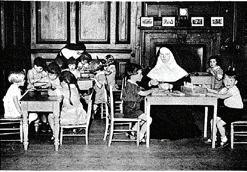
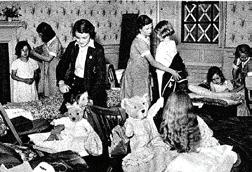
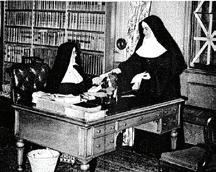
Despite the trials that faced them, the community sought a suitable house to replace the one at Gosford Green. Supported by Archbishop Williams of Birmingham, Mother Magdalen Pennington purchased Offchurch House, near Leamington Spa, in October 1941 for £16,000. In the December of that year, five of the sisters, accompanied by the three senior classes, went to Offchurch and set up a convent and boarding school; this left the junior pupils at Stoneleigh Abbey for the remainder of the war. Lord and Lady Leigh’s home offered spacious accommodation, whereas Offchurch was smaller and more like a normal house; the Offchurch dormitories accommodated five girls each, in contrast to the two large dormitories at Stoneleigh. Financial support was provided by parents, friends and benefactors to help with the purchase of the house and furniture.
Nuns and pupils at Stoneleigh Abbey from Tatler magazine 28 August 1940
Additional income came in 1944 by means of war damage compensation (£15,000), which, together with the money from the sale of the bombed site in Coventry, paid off the debt incurred by the acquisition of Offchurch House. The schools at both Stoneleigh and Offchurch grew.

Memories of St Joseph’s by Catherine Binns (Harrop), St Joseph’s pupil at Stoneleigh Abbey and Offchurch House, 1940s
I was at Stoneleigh Abbey during the War. St Joseph’s Convent, Coventry was evacuated there and I went too, though for a while I went daily from my home in Coventry. This proved a problem as it meant two buses and a long walk down the long drive and back again, so I became a boarder. We were given the basement area, the next floor up and the top floor, and changed use over the time. The basement was the dining room, though for a while we used the Monks’ old refectory which meant a walk through the cloister area and across the courtyard... not ideal especially in bad weather. The floor above, which is the area now shown to visitors at the Abbey, was two dormitories, I can’t recall how many slept in each room, but we were in camp beds in rows. The rooms were oak panelled and with large paintings on the walls and large windows with heavy shutters that had to be closed every night, black out.
When we were sleeping in the two huge rooms at Stoneleigh Abbey we were woken early in the morning, then it was a rush down a flight of stairs to the basement, then up along a corridor and up another flight of stairs to the top floor where the bathrooms were! After washing etc it was a repeat journey back to dorm!!
Life at Stoneleigh was hard in many ways for the girls. Firstly, we were away from our families who were living in a city of factories which were attractive to German bombers. I was at Stoneleigh that night, 14th November 1940. The nuns had heard the bombers flying over and suspected they were heading for Coventry so spent the night praying in the chapel. The girls heard about it the next day and as we all had family there, it was a worrying time. Gradually over the day news came but I, and two other girls, had heard nothing. Lord Leigh said he would drive over with our addresses to see what he could find, that was two days later. There was no post or telephone connections and the city was under military control. However, I was looking from a window on the top floor and saw my father cycling down the drive!! My family were all okay, my parents, sisters, grandmother and aunt...and by a miracle not one girl at the Abbey lost anyone.
One lunch time I went for a walk over a ploughed field away from the Abbey. As we walked, we heard the sound of machine gunning and turning saw a German bomber being chased and machine gunned by three or four Spitfires. We ran and got behind a large oak tree and whilst my friend was in hysterics I watched as they flew overhead and the next field. I then saw black objects dropping from the bomber and I grabbed my friend and we ran back towards the Abbey drive. I don’t remember hearing any explosion but as the field had recently been ploughed, they would have landed in soft ground. In my opinion it had been a decent German as he had turned away from the Abbey and didn’t drop the bombs until he was clear of buildings.
During our free time at Stoneleigh Abbey, there were tennis courts that the sporty girls used or we would go for walks along the drives which went both ways with wooded areas. We didn’t go near the river. I don’t think we were allowed to do so as it was thought too dangerous.
Indoors we had games like Monopoly which were very popular and we would take a slice of bread and marg after supper and try to toast it on the open fire in the dormitory!! It wasn’t very successful and we called it ‘Jimmy Frizzle’. Living in such a large building getting to and from rooms took a lot of our time too. We sang a lot, in the chapel etc and especially songs Sister Frances wrote to old tunes.
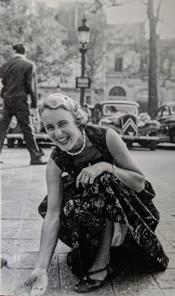
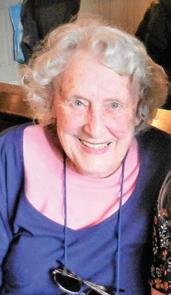
The Purchase of Crackley Hall
We were taught mostly by nuns, mainly because Stoneleigh was quite a distance for teachers to come, but we did have some who lived with us, but they came and went. It was a difficult time for children’s education as many teachers went into the forces, so we mainly got older teachers. In my final year at Offchurch when I was taking my School Certificate, Sister Frances took over teaching us every subject, but we didn’t do any science subjects nor maths. Children who were educated during the War really did so against the odds!!
In 1944 there were signs that the war was coming to end and so Mother Magdalen began to look for larger premises where all the sisters and pupils could be reunited. In June, Lord Kenilworth’s son, Lieutenant Colonel Cyril Davenport Siddeley, offered his country residence Crackley Hall, along with forty acres of land, for £20,000. This sum being beyond the community’s means, the proposal was at first refused but Lt Col Siddeley invited Mother Magdalen to look over the house; suggesting that if the sisters found the property to be suitable, an initial payment would be accepted and the remainder could be paid off over the next twenty years. The Archbishop urged Mother Magdalen to agree and, once the legal matters had been completed, the community received the keys in September 1944. In January 1945, Crackley Hall became St Joseph’s Convent and School, Kenilworth.

Catherine Binns
St Joseph’s at Kenilworth
The Hall soon received the children from Stoneleigh Abbey and by September the pupil roll numbered 140. An account in the 1980-1981 edition of ‘Peeper’s Pie’, the St Joseph’s School magazine, notes that Sister Mary Patrick (who became Headmistress of the school in 1958) ‘plunged with enthusiasm and energy into organising classes and timetables, syllabuses, books and furniture as the school put down new roots’. The senior boarders remained at Offchurch for another five years before they joined the others at Kenilworth. Even prior to their arrival, it was clear that more accommodation would be required and an ideal opportunity presented itself in the form of The Gables. This large house and garden, which neighboured Crackley Hall, had previously belonged to the Docker family; by the 1940s it was acting as the Head Office of Hawker Siddeley Aircraft, which had been transferred there from London during the war. With the company’s return to London imminent, the property became available and was bought by the Sisters of Mercy in March 1946 to house St Joseph’s Senior School pupils. In May, Offchurch was detached from Crackley Hall and a separate superior appointed.

An extract from the memories of The Gables by Eileen Hunt, St Joseph’s School secretary 1979-2002 and Hawker Siddeley Aircraft employee, 1945-46; from a piece written by Eileen in the 1980s
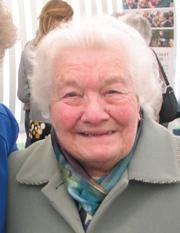
In 1945 when the Sisters of Mercy brought St Joseph’s Convent School from Stoneleigh Abbey to Crackley Hall, I was working ‘next door’ at The Gables as a very junior shorthand/typist in the employment of Hawker Siddeley Aircraft Co Ltd. These two fine buildings were, of course, completely separate establishments: Crackley Hall had been the country residence of Colonel Siddeley; and his neighbours at The Gables were Lord and Lady Docker. During the war, the Head Office of Hawker Siddeley Aircraft had been transferred from London to the comparative safety of Kenilworth and the Managing Director, Mr H. K. Jones, complete with secretary, cook/ housekeeper and accompanying staff, carried on the business of the company at The Gables, some of the personnel living on the premises and others, like the accountant and his family, occupying houses opposite in Common Lane.
Looking back, my working day seemed to be very leisurely and relaxed. My job was to assist the Managing Director’s secretary. Our office was the Staff Room. My desk was in the middle of the room facing the fireplace, the secretary’s was by the door leading to the adjoining room which was then Mr Jones’ office (more recently Mrs Rimmer’s room). Mr Jones’ sitting room, where he entertained visitors from London, was the present Library. This was the principal front room of the house, facing the Common. The sweeping driveway giving access to the front entrance from Common Lane could be observed from the windows. A long flight of covered stone steps led from the drive to the front door. Through the front door you came into an entrance hall and the grand staircase was before you.
The entrance hall has been divided off from the staircase now by the large glass panel, making a small room for the use of the librarian which is entered on the left-hand side of the Library. On the right of the entrance hall a door led into a small room then occupied by a telephonist operating a small switchboard. We [subsequently] called it the Interview Room and we entered it through a door in the corridor which leads to the Computer Room, Mrs Green’s room and the Staff cloakroom. These rooms in those days comprised Mr Jones’ private suite.
Eileen Hunt
The cloakrooms on the landing were obviously bedrooms then, with a bathroom at each end of the landing. The one on the left is used for the Sick Room, but for many years under Sister Patrick and Sister Philomena, the one on the right-hand side of the stairs was my little office, with my desk and filing cabinet occupying the space where the bath had once been. Quite a cosy little room, rather isolated, where one could concentrate without interruption on the job in hand. However, when our first photocopier came to reside with me, I seemed to get very popular and had a constant stream of visitors!
Besides fulfilling my secretarial duties, in those far off days, there were other pleasant, though unorthodox, tasks I was given, when things were slack in the office. One of these was to keep the flowers fresh in the vase on a lovely mahogany table in the middle of the hall. There was a long wall dividing the two properties which started somewhere in the area of the middle school and took a line through the Assembly Hall and through the tennis courts by the Gym. I can’t really remember where the boundary was, but I do remember a shrubbery in the area of the middle school where there were several dogs’ graves, complete with tombstones and memorial inscriptions.
Another strange chore for a typist was to feed the chickens and collect the eggs. The secretary herself had started this enterprise of keeping chickens, ensuring a plentiful supply of eggs for breakfast. It was the thing to do during the war, each household encouraged by the Government to become self-sufficient by keeping poultry, and even pigs, and digging up the flowerbeds to transform them into vegetable gardens. At The Gables all household scraps were re-cycled for chicken food by being put through a large mincer kept in the ‘back kitchen’ (the present smaller cloakroom) which was normally used for the preparation of vegetables, and the rougher work of the kitchen. I even took a turn at the mincer. I didn’t mind these strange tasks, although I did jib a bit when asked to feed two vicious cockerels being fattened up for Christmas. I was quite terrified of them, but they didn’t last for long!!
Another task I was sometimes called upon to do was to go up to the attics to sort through a collection of magazines for Mr Jones when he needed a specific piece of information to refer to for one of his reports. I had only the water tanks for company making ghostly, gurgling noises, and these sounds together with my own echoing footsteps on the bare board as I moved around heightened my imagination until I fancied ghosts were playing ‘hide and seek’ with me. A totally different atmosphere prevails now, with the Sixth Formers inhabiting this spacious area for their Common Rooms.
This idyllic lifestyle inevitably came to an end. I remember two Sisters arriving at The Gables one day to look over the place. It may have been Reverend Mother with Sister Patrick or Sister Philip. I learned that, with the cessation of hostilities, Mr Jones and his staff were soon to return to London, and the Sisters were to take over the house for use as the school, leaving Crackley Hall free for the exclusive use as the Sisters’ residence. It was sad to see the preparations being made for the departure back to London. I was transferred to Armstrong Siddeley Motors at Parkside, Coventry (more recently Rolls Royce) where two new post-war models were just coming into production – the Hurricane Coupe and the Lancaster Saloon. I was about to exchange my quiet, spacious office and leisurely paced life in the fresh air of rural Kenilworth, for a crowded, noisy, hive of activity called a Sales Office, in the midst of the Coventry motorcar industry.
Crackley’s Windmill
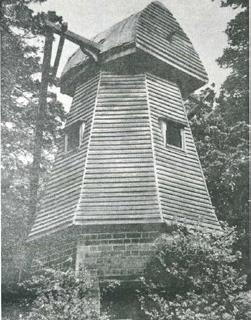
Growth of the School
An unusual feature in the school grounds was Crackley Hall’s very own windmill. Built in 1935 for Sir John Siddeley, the octagonal wooden windmill was a half-size replica of a smock-mill at Dyke, Leicestershire. The mill was apparently not used, but its machinery was occasionally put into operation for Sir John’s visitors to see. Although it was demolished in 1964 due to becoming derelict and unsafe, former pupils remember visiting it on nature walks in the 1950s; the slabs which once lay beneath it remain in the school grounds to this day.

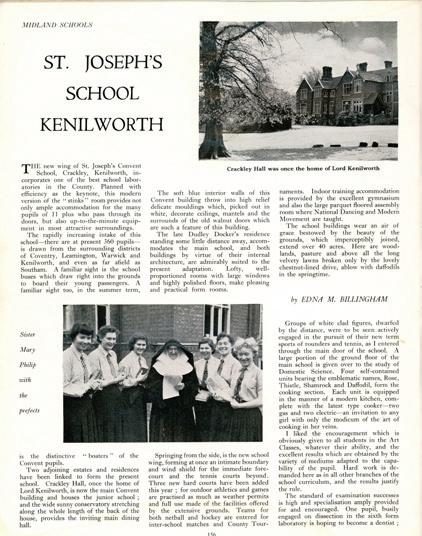
St Joseph’s thrived. By 1956, the Warwickshire & Worcestershire Magazine reported that the school had 350 pupils from Coventry, Leamington, Warwick, Kenilworth and as far away as Southam. The magazine noted that the school’s new wing ‘incorporates one of the best school laboratories in the County’. The Gables also benefited from new equipment; in the Domestic Science room ‘each unit is equipped in the manner of a modern kitchen, complete with the latest type [of] cooker - [...] an invitation to any girl with only the modicum of the art of cooking in her veins’. The Mother Superior and sixteen sisters - including the ‘enthusiastic and progressive’ headmistress Sister Mary Philip - formed the ‘very capable community responsible for the running of the Convent School’, supported by additional lay teachers. Special mention was also made of the school’s distinctive boaters – which are of course well-remembered by St Joseph’s alumnae!
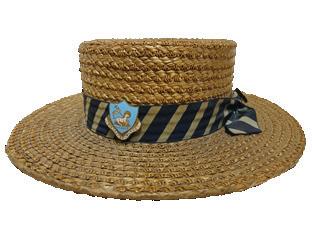
From a History of Kenilworth
Warwickshire and Worcestershire Magazine and St Joseph’s boater
Memories of St Joseph’s by Gillian Thornton (Willson), St Joseph’s pupil 1952-1958
My sister, Jackie, and I did not start at St Joseph’s until late January 1952, as we had just moved up to Coventry. Shortly afterwards, in early February, King George VI died, so it was quite a difficult time to adjust to a new school. A new experience was being taught by nuns! The Coronation followed the next year, by which time we were well settled.
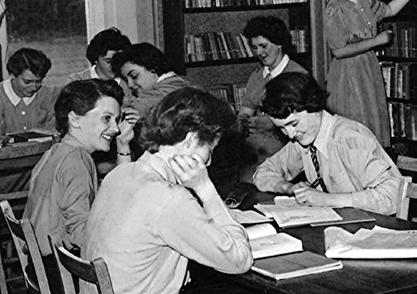
We lived in the far side of Coventry, so our journey to school meant an early start to get into Pool Meadow to catch the school bus. Pupils travelled some distances to get to school.
The Junior section of the school was housed in Crackley Hall, which also included the Convent. The Seniors were in The Gables, a short distance away. The Dining Hall was in a long glass conservatory in the Convent and the Chapel was also located in the Hall. The Gables was really a big country house, with many rooms that had massive fireplaces and an impressive staircase. Rules were strict and, if disobeyed, could result in a detention.
The school had limited facilities, so there was great excitement when we were told that a new Assembly Hall and Science laboratory were to be built. When completed, the new building was to be opened by Cardinal Griffin, Sister Mary Philip’s (our Headmistress) brother. It was a very big occasion when he came and was covered by the press.
We used to enjoy a number of Holy Days, which, looking back, was quite disruptive academically. When it was Corpus Christi we could return to school for a large procession which would go through the Nun’s rose garden towards the pony field, now a housing estate! We all wore veils that caused much excitement!
Every year, a Retreat was held in the lovely Chapel and strict silence was kept!
Sports Day was a day my sister and I enjoyed as we were keen on athletics. We were divided up into four ‘houses’ at school and there was a real competitive spirit. A fête was also held on the Convent lawn on Sports Day.
As my last days at school approached, a super ‘state of the art’ new gym was completed, replacing the tiny hall we had had to use, with basic apparatus. As I was hoping to go onto train as a Physical Education teacher, the new gym came too late! Before I left Sister Philip let me be the first person to climb the ropes!!
It is good to return and find a thriving happy school, with great facilities all built on the foundation laid by the dedicated Sisters of Mercy.
St Joseph’s pupils in the library circa 1955
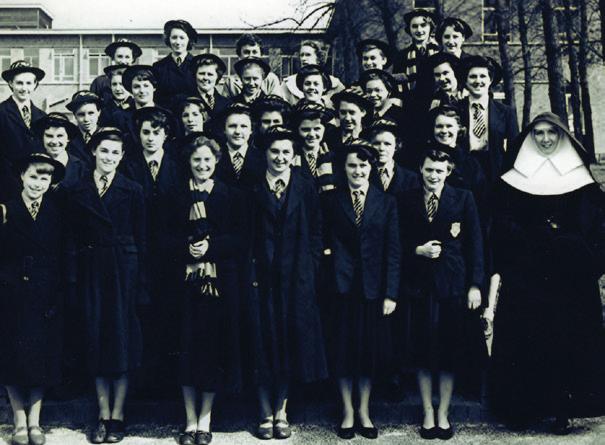
School trip to Birmingham circa 1955

An extract from memories of St Joseph’s Senior School by Mary Taylor (Darby), St Joseph’s pupil 1964-1973
After the 11+, although several of us had indeed passed to attend other schools selected by our parents, we were offered a free place instead to continue with St Joseph’s. This made the initially reluctant start to our Senior School career, less traumatic probably. Every book had to be covered, even exercise books. They would be stored, spine up, neatly in our chosen desk, that were laid out in maybe six long vertical lines in our year classroom. The classic wooden school desk with a hinged lid, and a now redundant inkwell, as we had to write with a fountain pen, not biro, filled from a personal bottle of blue-black ink, with the essential pink blotting paper at hand. Those who could write in italic from the Junior school were encouraged to continue and use an italic nib. As we progressed through the school, we personalised the letters with extra flourishes and eventually, went home with less ink-covered hands and uniforms!
The excitement of having a different teacher enter the classroom for the now more varied subjects! Even better, having to find our way in time to different rooms for Art, Music, Biology, Science, and hurtle to the gym to learn new Sports. New languages also with French being taught by the dear Mrs Palmer, a petite and stylish native speaker, with a lovely sense of humour. Latin was introduced in Upper III and the dulcet tones of a class chant of, “Amo, amas, Amat, Amamus, Amatis, Amant,” could be heard.
There were two classes for each year group, with one being called the parallel or P stream. They were lucky enough to do domestic science and continue with needlework with the very tall, striking, Miss Backhouse, whereas the other stream had to study Chemistry and Physics.
I mostly lived in Kenilworth but a couple of years in Leamington Spa led me to experience the school bus system. After we alighted, having bombarded the Driver with a multitude of “Thank You Driver!” we had to walk all the way down the drive with large satchels of homework, and books, maybe even cookery baskets...hats, gloves, coats, scarves... phew! Nevertheless, sometimes the bus was a little late, and on these occasions, we could hear, faintly at first, a distant tap tap tapping. As it grew in volume, so the front of the long line of discarded bus passengers started to increase pace to a jog, and eventually we all took the pace. Like a lone General summoning his troops to battle...one hand could start 50 plus Girls running when they least wanted to! As one approached the Gables past the Junior School, we looked up to see the window to Sister Patrick’s office open, and a ringed hand tapping on the glass for us to all hurry up!
I have never come across anyone in teaching who had the same sense of presence as Sister Patrick, even if she wasn’t in the room. Silence would fall immediately she came near. She had the amazing knack of opening the library door like a ghost, just as you were saying something, albeit quietly, to your friend. Her insistence on good manners, including always saying Good Morning, offering to carry the bags for Staff members, saying thank you to any bus driver (something I still do), taking any rubbish home with you, were just a few instilled over the years.
Those that went into the Sixth Form for A Levels, were allowed to wear a maroon v necked jumper, which I could hardly wait for! The dirty green cardigan, banished! We had our form rooms right at the top of the Gables house and adjoining the classroom was a Common Room. Wow...comfy chairs, a place of our own. I’m not sure how we all would have escaped in a serious fire, but we didn’t care... we were grown-ups!! We did a lot of individual work, when we did not have a lesson, in the lovely library a floor below. A beautiful bay window with a window seat, another also overlooking the Common, a thick green carpet, a tall ceiling and a beautiful door with the shiny brass doorknob, that Sister Patrick must have had oiled every day to maintain her silent entry.
Overall, my memories of St Joseph’s Convent are fond ones, and also grateful. I felt a lot of pressure, on our performance at exams and generally, put upon us, yet our personal hopes and fears only articulated in corners with your best mate. It taught me to find a way to succeed, be resilient, aim to be the best version of yourself, but be kind. All in all, I was given a range of benefits and realise I was privileged to experience them.
Continuing Developments
As the school continued to grow over the decades, further buildings were needed. After two years of construction, the new Junior School building was officially opened on 21 November 1962 by Archbishop Masterson. By September 1965 there were 475 pupils in the school, including 40 in the Sixth Form, and a new building had been completed earlier in the year to provide further teaching space for Physics, Chemistry, Art, Needlework and Domestic Science. Following the death of Mother Magdalen in December 1968, Headmistress Sister Mary Patrick saw that a new school hall would be a fitting memorial; as noted in ‘Peeper’s Pie’ 1968-1969, ‘under God’s guidance [St Joseph’s] owes more to Mother Magdalen than to anyone [...] All the school is today with its vast programme of building and improvements is due to her direction and guidance’.

Mother Magdalen Pennington - Union of the Sisters of Mercy GB Archives
The new hall was opened and blessed by Archbishop Dwyer on 9 November 1972. In 1972 it was also decided to admit boys to the Preparatory School again, and further building work followed to provide space for the new pupils.
The School Environment

The school continued to exemplify a well-rounded, inclusive and forward-thinking approach to education; the Editorial of ‘Peeper’s Pie’ 1965–1966, for example, stated that ‘A school magazine should not only be a chronicle of events in the school’s life but should reflect the tastes and opinions of the pupils. If, therefore, some readers find some of the work obscure or too experimental I should emphasize how important it is for girls to develop their literary talents while still at school.’
A wide range of extra-curricular activities were also available to the pupils. Memorable school trips included a visit to Stratford to see Eric Porter as King Lear in 1968, a ski trip to Austria in 1969, and Easter in Rome for Holy Year in 1975. The Duke of Edinburgh’s Award also provided some new experiences for many of the girls, with activities including archery, expeditions, and even the very slow process of trying to cook potatoes over a camping stove!

Former students have many fond memories of their time at school, and recollect the strict rules, assemblies in the gymnasium, the four houses St Thomas More (red), St John Fisher (yellow), Blessed John Wall (blue) and Blessed Edmund Campion (green) and the solid wood staircases leading to the classrooms.
Just as it does at Crackley today, the connection between students and their teachers remained strong over the years: on Sister Mary Patrick’s retirement as Headmistress in 1981, ‘Peeper’s Pie ’ 1980–1981 noted that ‘it has always been a source of joy to returning ‘Old Girls’ to find that Sister not only remembers their schooldays but has followed their progress afterwards with keen interest and satisfaction.’
St Joseph’s Sixth Formers circa 1970s
Memories of St Joseph’s by Rachel Taylor (Roberts), Latin teacher at St Joseph’s School 1974-2001, and at Princethorpe College 2001-2024
One of the things that stands out in my mind more than anything is my interview with Sister Mary Patrick in February 1974 - the first and only interview for a job I have ever had, and far from typical, I am sure. It was shortly after the ‘Great Fire’ which destroyed a fair part of the building, including the main entrance. I wandered rather helplessly around outside until I heard a metallic sort of tapping from high up in the building. It must have been Sister Patrick’s ring tapping on the windowpane. (I would learn later this was often a forewarning of her presence.) She gesticulated to me to walk round to the side of the building where I found a dark and rather dingy passageway leading to an equally dark hallway with stairs leading upwards into the unknown. At the top of this flight, I was met by Sister Mary Patrick herself who led me briskly up the stairs, and then further still to the top landing where she now resided in a poky little office, later to become the room where I taught most of my Sixth Form lessons. She gave me a detailed explanation of the fire and how it had been started, she presumed, by a cigarette stub which had not been properly extinguished before being put in the bin shed underneath the building. This was followed by a long homily on the perils of smoking. Having been asked very few questions about my past education, I offered her the certificates I had brought as evidence. However, Sister said she didn’t need to see them because she had already made up her mind. There was a long pause … I feared the worst …..then she offered me the job, to start on April 17th: I should report punctually at 8.15am.
I can only assume there were no other applicants! After a further pause it was then suggested that, later in life, were I to have the blessing of a husband and children, I should then consider very carefully where my priorities lay! I was then escorted round the school buildings and was shown with particular pride and joy the amazing new school hall, built in memory of Mother Mary Magdalen. It was explained to me how pupils were expected to remove their shoes to ensure the floor would not be damaged by grit on the soles of their shoes. To ensure I did the right thing, I promptly removed my shoes. Here I was given a long discourse both on the Sisters of Mercy and the history of St Joseph’s. Finally, I was whisked off to the Rose Garden to meet Cyril the groundsman and given a dozen of his finest eggs to bring home for my parents. Can anyone match that for an interview?
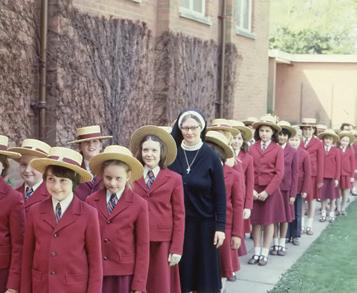
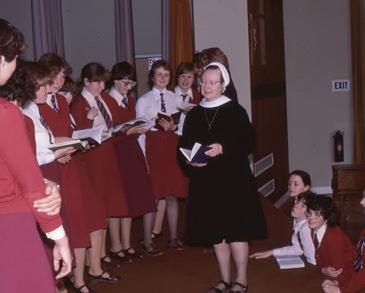
Sr Felicity Coveney with pupils going to chapel for May Devotions and Sr Osburga Richardson with senior girls doing drama - Union of the Sisters of Mercy GB Archives

St Joseph’s is - from Peeper’s Pie 1977-78
Memories

of St Joseph’s and Crackley Hall by Noreen Thornhill, Form Tutor and Subject Teacher at St Joseph’s School / Crackley Hall, 19792003
Under the headship of Sister Patrick and Sister Philomena we had a very ‘flexible’ curriculum: broad, thorough, exciting, original, innovative and for myself – much was cross curricular. Sister Patrick was strict, fair and proud of her school. She gave us a lot of freedom to mould the curriculum as we thought best. I admired her very much and also Sister Philomena who was the essence of kindness. I always felt very blessed to have been in such a great environment. I loved teaching there and I loved the children. We had such fun exploring many subjects. I tried to make my classroom a special place where the children could relax, enjoy the learning process and grow in confidence and independence. I could write a book about all the various events, special days, religious celebrations, outings and trips, sports days and fairs, sales of work and concerts. When I think of them, the years drop away!
A New Headmistress
After Sister Mary Patrick’s 23 years in post as Headmistress, the headship next passed to Sister Philomena Bowers. Under Sister Philomena’s leadership, morning assemblies were introduced in order to bring students and staff together on a daily basis for worship and reflection. Readings, prayers and hymns were linked to the day’s theme, with a different group of girls invited to share the stage with the Headmistress each day; ‘Peeper’s Pie’ 1981-1982 noted the ‘consequent improvement in reading and self-confidence’ amongst the students.

While the school continued to develop and grow over the years, it retained a strong sense of its roots and heritage. On 13 May 1987, Bishop Cleary, Auxiliary Bishop of Birmingham, celebrated a Mass of Thanksgiving at St Joseph’s to mark the 125th anniversary of its opening in Coventry. A special exhibition was created to celebrate the school’s history, including a replica of the Junior School in the form of a birthday cake by teacher Noreen Thornhill, together with photographs, literature and children’s work.
St Joseph’s 125th Anniversary - Peeper’s Pie 1986-1987
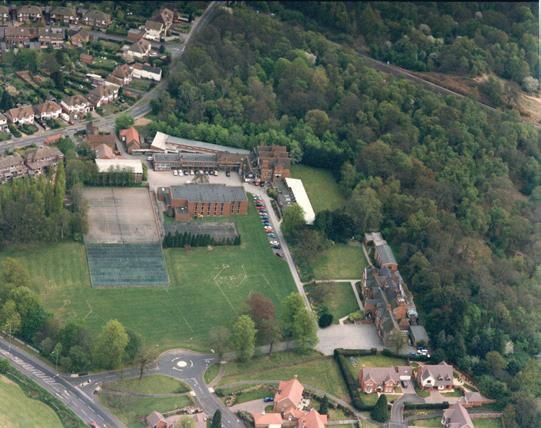
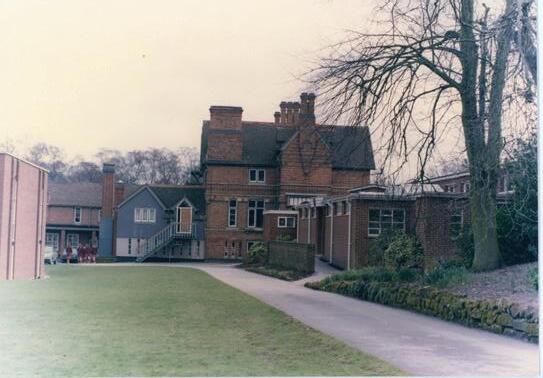
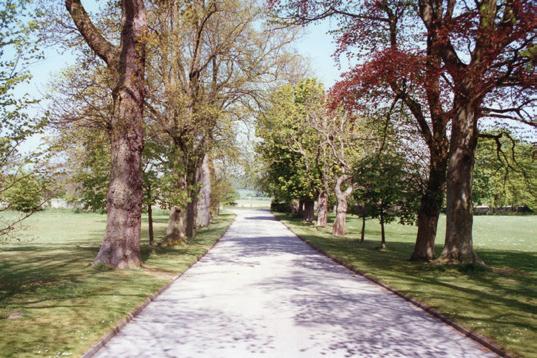


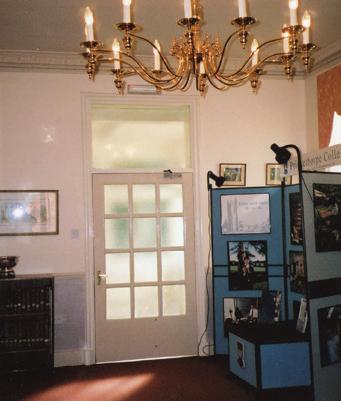
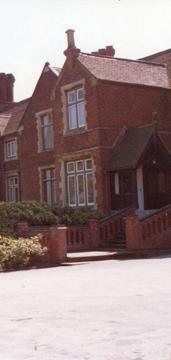
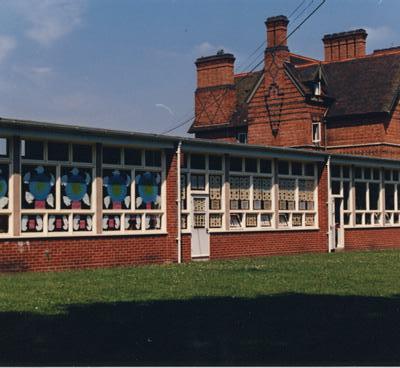




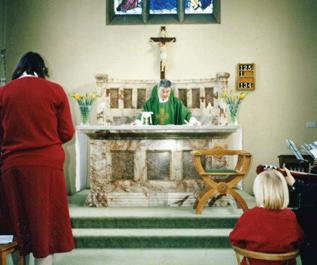
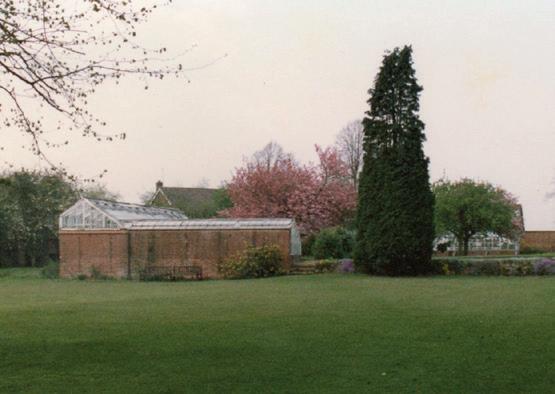

The End of an Era – and New Beginnings
As time passed, the Sisters of Mercy became more conscious of their raison d’être: to attend to the ‘cry of the poor’ for whom the order had originally been founded. The apostolate was reviewed and its Chapter issued a statement which committed the order to a mission focused on the penniless. The order decided to withdraw from the Independent Schools Association, and St Joseph’s School – now based entirely in The Gables and new school buildings – was transferred to a body of lay trustees in 1990, with the community continuing to live in Crackley Hall.
In 1991 Crackley Hall was sold to the trustees, and the remaining nuns dispersed to other religious houses. St Joseph’s continued as a Roman Catholic independent school for girls aged 4-18 years and boys aged 4-8 years, with its own nursery providing children aged 3-4 years with their first steps into the school environment. In the summer term of 1991, the headship transferred from Sister Philomena Bowers to Frances Rimmer, the first lay head of St Joseph’s. ‘Peeper’s Pie’ 1990-1991 sets out Mrs Rimmer’s vision of ‘the school’s aims and purposes: a Catholic school – which means a religious and caring school where girls can develop their potential whether their gifts are ‘academic or practical’ and where parents and staff co-operate in the pupils’ interests and the school is integrated into the larger community. It is intended that the heroic sacrifices of the nuns who founded the school shall not be in vain.’
Having previously taught in Leamington, Lesley Cox had transferred to St Joseph’s Convent in the late 1960s to teach maths, a subject which she loved, passing on her enthusiasm to her pupils. So many who believed that they could never succeed in the subject came to appreciate and enjoy her lessons and were surprised at the progress they made under her gentle support and guidance.
Lesley’s commitment and dedication to St Joseph’s during all the changes which took place led to her appointment, first as Deputy Head, and then in 1994 as Headmistress. These were challenging times but Lesley, with her unflappable calmness and professionalism, led and guided the school until her retirement in 1999.
The Children’s Summit 1995
As early as the 1990s, St Joseph’s pupils were becoming aware of their environmental responsibilities and the need to take action to save the planet. In 1995, the Junior 3 class had a very exciting opportunity to play their part in an international movement. With the encouragement of their form tutor, Noreen Thornhill, the class entered a competition to attend the second ever Children’s Summit, organised by Disney Publications in association with UNESCO. The Summit, held at Disneyland Paris, would bring together 700 children from 26 countries to discuss their concerns and hopes about their environment.
Out of over 1,100 entries Junior 3’s bright and colourful poster, made entirely of recycled materials, won them a place at the Summit. The pupils did an excellent job of representing Britain on the international stage, where they participated in sessions run by environmental experts and presented their pledges on environmental action to the Director General of UNESCO.
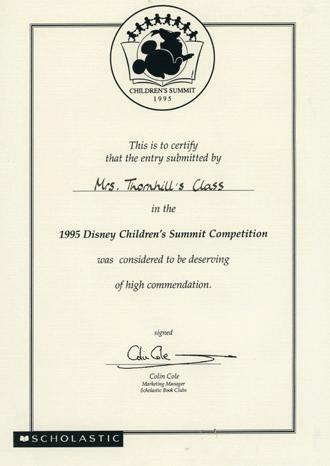
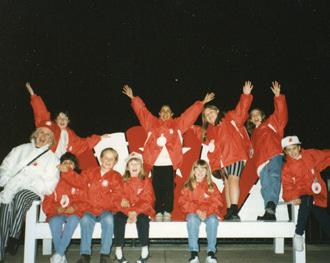


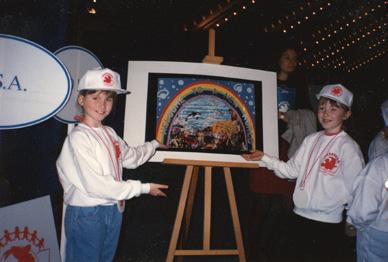

The Children’s Summit 1995
The Princethorpe Foundation

By 2000 the numbers in the senior school had declined and the decision was taken to merge with Princethorpe College under the umbrella of the newly formed Warwickshire Catholic Independent Schools Foundation.
Former Foundation Assistant Head Alex Darkes remembers:
“The 2001 merger of Princethorpe College and St Joseph’s School in Kenilworth brought many new opportunities. For many years, the schools had enjoyed a close relationship through the communities of the Sisters of Mercy and the Missionaries of the Sacred Heart and many families had children at both schools. After many meetings of trustees and both executive teams to agree terms, the Warwickshire Catholic Independent Schools Foundation was formed, with the two religious congregations very generously incorporating the freeholds of both sites.
This was concurrent with the seniors from St Joseph’s moving to Princethorpe and a co-educational junior school being established at Crackley Hall. There was colossal investment in the key property which was formerly the convent of the Sisters of Mercy, including a new IT suite, library, classrooms, kitchen and dining facilities for the junior school and nursery. At the same time, a second house on the Kenilworth site. The Gables (formerly the home of Sir Bernard Docker of BSA and Daimler cars fame), the assembly hall, former science block and junior school buildings were demolished and sold with some land to developers.
The junior school opened with just 66 pupils under the leadership of the dynamic and inspiring Jane le Poidevin, who had recently joined the school. The Head of St Joseph’s, at the time of the merger, the late Heather Harris, who had joined from St Clotilde’s in Lechlade, became the Deputy Head of Princethorpe, with Princethorpe’s Head John Shinkwin as the CEO. There is little doubt that the successful way in which the merger came together was down to the natural diplomatic skills of both Heather Harris and John Shinkwin, with most of the business matters in the hands of the genial and able Paul Shaw, who took on the role of Foundation Bursar.
It is interesting to compare the numbers at the school today, with nearly 300 pupils in the school and on-site nursery, they show such successful growth over a period of just under 25 years. The Gables lives on in the form of the new hall and classrooms at Crackley and indeed there is a very strong car theme with the whole Crackley Hall site: the Sisters of Mercy having acquired Crackley Hall in 1944 from Sir John Siddeley, 1st Baron Kenilworth, who was the Siddeley of the Coventry car makers Armstrong Siddeley.”
The Tower Autumn 2000
St Joseph’s Junior School

Jane le Poidevin – herself a former St Joseph’s pupil – took on the headship of St Joseph’s in its new primary-only format in 2001.

Following completion of the refurbishment works, St Joseph’s was officially opened in its new home at Crackley Hall on 1 November 2002 by Andy King, MP for Rugby and Kenilworth, and a Mass was led by Fr Kevin Hooper. Pupils, staff and invited guests participated in a procession from the old school buildings to the new, with Sister Philomena Bowers carrying a portrait of Mother Macauley, founder of the Sisters of Mercy, to its new place in the foyer of Crackley Hall.
As the senior students settled into their new school environment and explored the new opportunities available to them on the Princethorpe campus, a wide range of new experiences also opened up to the junior pupils through becoming part of the new Foundation. Just as they do today, the children enjoyed visits to Princethorpe for sports, music and special events; as the College’s main feeder school, St Joseph’s Junior 6 pupils were now also able to benefit from familiarisation visits to Princethorpe which proved a huge success.
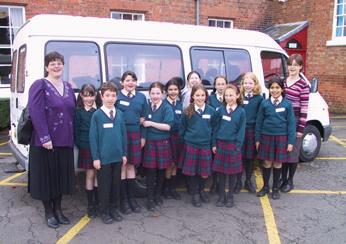
A 2003 account by a Junior 6 pupil mentions a quiz, drama production and (of course!) a Princethorpe cookie as being particular highlights of the day, along with the excitement of their arrival at the College: ‘We all felt a bit like Harry Potter on his first day as we drove up the long and winding drive towards the school itself. It all seemed just as magical.’
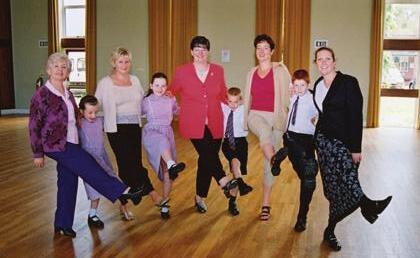
In spring 2003, St Joseph’s governing body merged with that of Princethorpe College, and the school became known as St Joseph’s Crackley Hall. It continued to go from strength to strength, building a well-deserved reputation for its excellent academic results, outstanding pastoral care and wide range of co-curricular opportunities; in January 2004 it was the only Warwickshire school to be named in the Sunday Times ‘Parent Power’ list of top 100 UK prep schools.
St Joseph’s staff, pupils and parents celebrate a glowing inspection report 2002
Sister Philomena carries a portrait of Mother Macauley to its new home
St Joseph’s Junior 6 visit Princethorpe College 2003
Jane le Poidevin described how ‘current and new parents are finding that St Joseph’s Crackley Hall is like a newly unearthed treasure chest: full of things which are highly valued.’ From January 2004 the school became known as Crackley Hall, adding the line ‘St Joseph’s Park’ to its address in honour of its heritage.
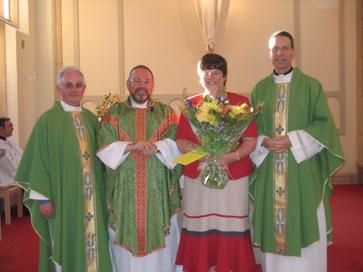
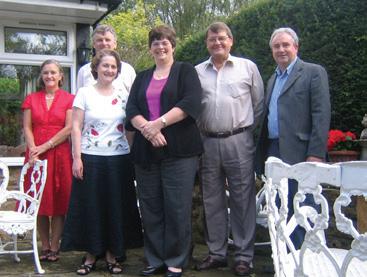
The 2000s also saw the Foundation welcoming its youngest children yet, with Crackley’s nursery – now named ‘Little Crackers’ - opening its Stay ’n’ Play group in 2004. Toddlers and their parents, grandparents and carers were invited to join the drop-in weekly sessions, with different play activities to enjoy each week – the warm welcome at this popular group continues to this day. Stay ’n’ Play celebrated its 20th anniversary in 2024.
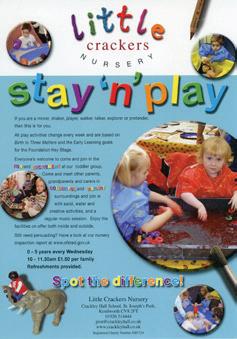

Jane le Poidevin’s leaving Mass and leaving lunch 2008
Stay ‘n’ Play advert from 2011 and Stay ‘n’ Play celebrates 20th Anniversary
The Abbotsford merger
In 2010 following negotiations led by Ed Hester, Senior Head of the Foundation and Eddie Tolcher, Foundation Bursar, Abbotsford School, a smaller co-educational independent school also situated in Kenilworth, merged with Crackley Hall to join the newly renamed Princethorpe Foundation. Seven staff and 45 pupils transferred from the Abbotsford site, and were welcomed into the Crackley family under the leadership of Paul Ryan, who had taken up the headship in 2008 when Jane le Poidevin was appointed as General Secretary of ISA.
Foundation Principal Ed Hester remembers:

“The Abbotsford merger was a key event in Crackley Hall’s history – a huge amount of hard work went into this project which significantly strengthened both the school and Foundation. Abbottsford’s pupil numbers had been dropping, not least because of the closure of the Peugeot factory in Ryton, and their governors were looking to ensure the future education of their pupils. Abbotsford’s ethos and values were well very aligned with Crackley Hall’s and we worked closely with Peter Rush, their Chair of Governors, to ensure that the Abbotsford pupils were able to seamlessly transition and integrate into Crackley Hall and successfully continue their educational journey.”

Former Foundation Assistant Head, Alex Darkes, remembers:
“I remember feeling quite excited about the prospect of the Abbotsford merger, having spent many years liaising with the school in my role with admissions I knew that the two schools shared many common goals. I had also taught lots of Abbotsford pupils and Princethorpe had become a natural and easy transition for many of them. For much of the time, my key contact was former Abbotsford Head, Barbara Chitty, who over the years had become a good friend. By the time of the merger, Barbara had retired, and the headship had passed to Dominic Cook, who ultimately went on to another job. It was wonderful that so many pupils and staff joined the Foundation. The Abbotsford building became surplus to requirements and was ultimately sold. It was a very handsome building in Bridge Street, listed in 1949, but was land-locked and had no playing fields; the school had used Abbey Fields for their games lessons. It was very fitting that the subsequent new wing at Crackley Hall should be called the Abbotsford Wing and I was delighted that it was formally opened by Barbara Chitty.”
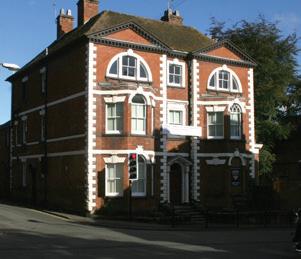
In September 2011, following Paul Ryan’s move back into the state sector, the headship then passed to Rob Duigan.
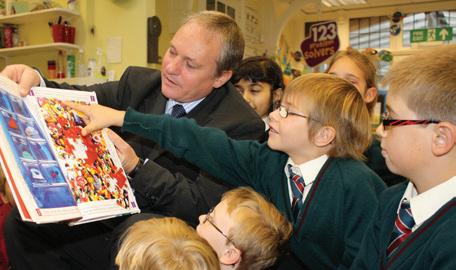
Rob came to Crackley with a wealth of experience in the primary education sector in both the UK and South Africa, most recently at St Teresa’s Catholic Independent School in Princes Risborough, where he had been for the previous eight years, and his knowledge and leadership proved invaluable in steering the school through its next stage of development.
In the following years, and to mark the merger with Abbotsford School, a new Abbotsford Wing at Crackley Hall was developed, and officially opened and blessed by Fr Kevin Hooper on 24 May 2013. Master-minded by long-standing Foundation Assistant Head, Alex Darkes, the wing included a new art room, science laboratory and further classrooms. Headmaster Rob Duigan stated at its opening ceremony that ‘the addition of these facilities has made an enormous difference to the day-to-day life of the pupils and staff of Crackley Hall’.
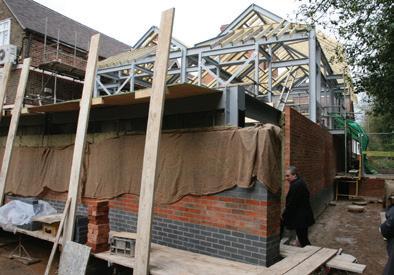
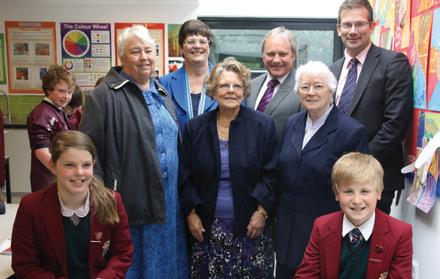
Abbotsford Wing Construction and Grand Opening
New Headmaster Rob Duigan with pupils at Crackley Hall 2011
Memories of Crackley Hall by Anna Bond, Crackley Receptionist 2007-2011, and Head’s PA and Office Manager 2011-2016

It felt providential when I spotted a job ad in the Kenilworth News in 2007. I had been living in a house adjoining the school boundary for a little while and was looking for a job in a school. I arranged a tour of the school and Sue Porter, the Head’s PA at the time, showed me round. I was sold! Everything from the welcome from Breeda Higgins at the door, to the sight of Jane le Poidevin running down the corridor in her bare feet laughing, made it feel like the place I needed to be.
I was Receptionist for four years. From day one I felt at home and that we were a team. We worked hard, with Sue and I accessing Breeda’s 18-year-strong encyclopaedic knowledge of the school and its history, as well as endless pearls of Higginisms - “say nothing and keep saying it” has remained one of the best pieces of professional advice I’ve ever received! I remember Fridays spent crawling around on the floor filling the orange envelopes with letters for the week to go to each family, before we went digital a few years later. This was a monumental task, and there was no wriggle room for late submissions!
I would have been heartbroken if I’d not got the role as Head’s PA and Office Manager in 2011. Sue had made the decision to move on, and by then I truly felt one of the family. We’d been through a lot together, and the school had merged with Abbotsford in the interim. The staff had supported each other with love and kindness throughout this process and it had not always been easy, but a team of Abbotsford staff and children were quickly part of the Crackley community.
Rob Duigan joined Crackley Hall after I’d been in the post for a term, coming from a school in Buckinghamshire where he’d recently enrolled two of my nephews. Two weeks into his first term we received the inspection call, and my learning curve was steep! As always, the team pulled together with long evenings and a weekend working to ensure that we were ready. All went well, naturally!
Over the following five years, our team grew, processes evolved and a new hall, new roof and a large extension were all completed. We even went digital with the Friday letter!
I could write pages and pages of memories here: the World Book Days and celebration days when we all dressed up; snow days; Prizegivings; Christmas nativities and tearful farewells to so many wonderful colleagues over the years who have remained firm friends. The small moments are what makes a job special: a discussion with a tearful child with a cut knee about what they had for lunch, visits from Nursery children proudly bringing you cakes they had made and the time I broke Rob Duigan’s toe when he caught a mirror with his foot when I knocked it over with the wheel of my chair in his office. But my overriding memory of working at Crackley Hall comes from the people, and the sense of community that the place seems to inspire. There is something in the fabric of the building that seems to rub off on those who work there. There is laughter, love and the most incredible work ethic, whilst everyone under the roof works together for the good of the children in their care.
I left in 2016, ready for new challenges. I’ve never quite been able to move on though, always remaining in touch with my friends there, and always delighted to run into former pupils and their families. When Ed Hester asked me to help out for a few weeks in 2024 whilst a new PA was recruited, I didn’t hesitate and returned to my role, my desk and my old boss … and stayed six months. Once a Crackley person, always a Crackley person.
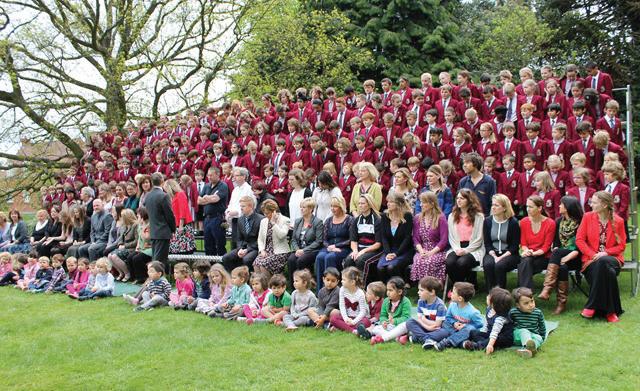
Looking to the Past, Looking to the Future
With 245 pupils on roll by 2016, further space was once again needed, and a new development The Gables was officially opened by Bishop Robert Byrne, Auxiliary Bishop for the Archdiocese of Birmingham, on 17 March of that year. The 632m² extension included a new hall to accommodate the whole school, purpose-built music accommodation and two new classrooms. Acknowledging the importance of the school’s history, the extension was named in honour of the now demolished Gables building and the stained glass and ceiling boss from the former chapel were incorporated into the design.
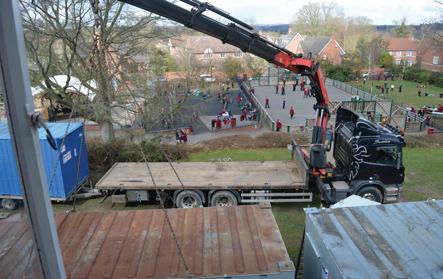

Whole School Photo 2014
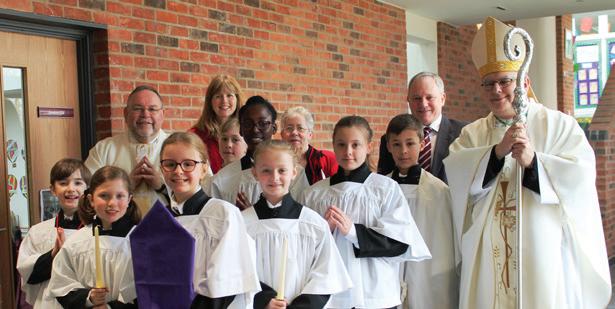


In September 2016, prep school Crescent School in Bilton, Rugby was welcomed into the Princethorpe Foundation, and Crackley and Crescent pupils and staff alike were able to benefit from new connections and collaborations. November 2017 saw the first joint music workshop between the two schools, culminating in a concert of choral music which was greatly enjoyed by all involved; the initiative proved so successful that it soon became a regular feature in the calendar. Every year the schools come together for a Choral Workshop, an Orchestra Workshop and for friendly but fiercely competitive sports fixtures.

Choral Workshop Crackley and Crescent
Bishop Robert Byrne at Gables OpeningMarch 2016
The Next Best Place To Home
Crackley Hall’s pupils often describe it as the ‘next best place to home’, a phrase that became a much repeated part of the school’s marketing. Central to the school is its strong Christian ethos, high standards of care and a compelling feeling of community, as both staff and parents work together for the good of all the children.

In their 2017 inspection, the Independent Schools Inspectorate rated Crackley Hall as ‘Excellent’ in every area, reflecting the school’s commitment to make learning fun with a wide and varied curriculum designed to help all pupils get the very best of starts.
The following years saw the school flourish and grow, adding second classes in most year groups as demand for places increased. Pupils continued to enjoy a wide variety of lessons and co-curricular activities from Mandarin to Music, the Performing Arts to representative sports.
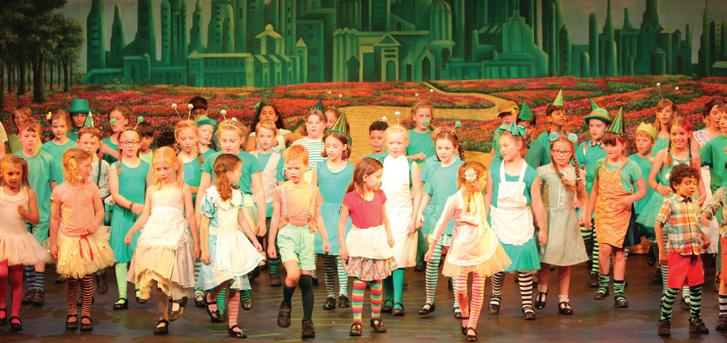
Crackley Hall ISI Inspection 2017
Crackley Hall Summer Production 2018

2020 to 2021 The Covid Years


Hall
Nuneaton Festival 2019
No-one can deny the difficulty of the challenges faced during the Coronavirus pandemic and the impact of the enforced closure of schools on society in general and in particular on education and young people. Friday 19 March 2020 was indeed a very dark day for Crackley Hall and the wider Foundation as parents, children and staff became aware that life and in particular school life was going to change considerably over the coming weeks and months.
Steadfast leadership and clear decision making from Headmaster, Rob Duigan, his Senior Leadership Team and the Foundation Team, steered the school and Foundation through this uncertain time. There was a smooth move to home learning with the teachers, pupils and parents working together in adopting the Seesaw platform for online learning and live lessons. School life went virtual off and on for many months, from home learning tasks, live lessons and assemblies to parents’ evenings and Open Events. On the return to school, thanks to extremely careful planning Covid measures were swiftly implemented and testing regimes introduced, before measures were relaxed and thankfully eventually lifted.
Crackley Compass
C
In 2021 the school introduced the Crackley Compass building on the legacy of the school’s original star system. It expressed the school community’s shared values and challenges and reminded all pupils that they could make a difference.
Developed by Deputy Head, Duncan Cottrill, and pupils across the school, it is a set of ambitions based on the school’s ethos and values that encouraged and supported all Crackley’s pupils to help them to get the best out of their time at the school.
Crackley
75th Anniversary Celebrations

Post COVID the school was finally able to belatedly celebrate its 75th Anniversary with an Open House and Gala Ball. It was a wonderful opportunity to welcome back former pupils to help celebrate the school’s long history.
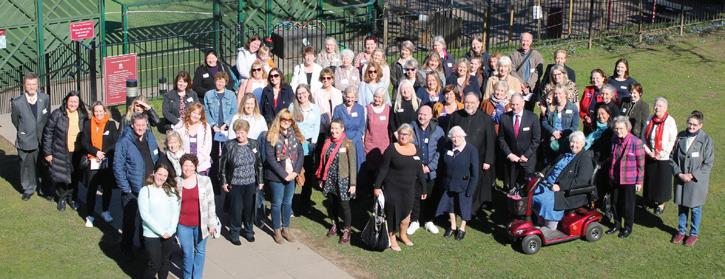
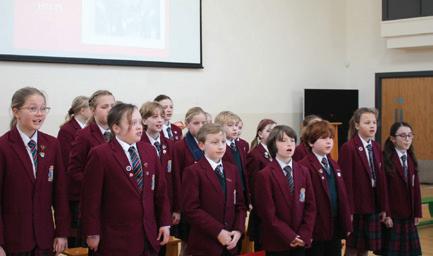
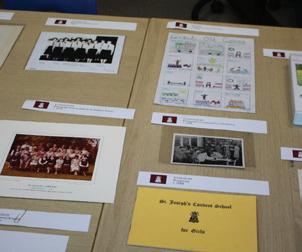
St Joseph’s 75th Group Photo
Choir Singing and Archives Display 75th Open House March 2022
Good Schools Guide
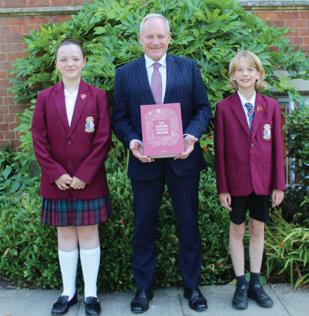
In September 2021 Crackley Hall School received its first ever review by the prestigious Good Schools Guide. An editor from the Guide visited the school, interviewed the Headmaster, Rob Duigan, toured the site with pupils, observed lessons and spoke to teachers and parents.

Commenting on the school’s approach to teaching and learning, the Guide said:
“Pupils and parents praise their ‘lovely’ teachers for ‘listening’, ‘really fun lessons’, and ‘taking every opportunity to find what they are good at and encouraging them’.
“Parents say teachers manage work levels so that at any one time, ‘there may be three different levels taught in the same classroom, giving individual attention, focusing on each end of the spectrum’ without, as one noted, ‘losing sight of the middle of the road’. Children who need stretching are given extension work within classroom, in small tutor groups and access a regional gifted and talented programme.”
The very comprehensive review concludes with a Last Word, which sums up the Guide’s findings:
‘In his address to pupils the headmaster tells them, ‘You are valued, try your best at all times, stay involved, be kind to others and the world. Smile!’ That pretty much sums what we saw at Crackley Hall.’
Windmill Wood and Forest School

Crackley Hall School introduced Forest School provision in 2016 and the lessons have become a regular part of school life. The sessions take place in Windmill Wood which sits directly behind the school and the children take part in a planned programme of activities led by the school’s experienced Forest School Practitioners.
The wood is named after Kenilworth’s least known landmark, Sir John Siddeley’s windmill which was constructed at the top pf the common immediately to the rear of Crackley Hall. The octagonal footings remain to this day.
In January 2023, some of the previously inaccessible areas were made safe for staff and pupils, expanding the woodland area the school could use. In 2024 the school was delighted to have its Forest School and outdoor learning provision recognised when it was awarded the Woodland Trust’s Bronze and Silver Awards.
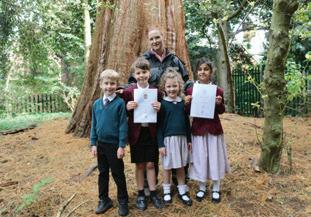
Headmaster with Head Boy and Head Girl 2021 Woodland
80th Anniversary Celebrations
In 2025 Crackley Hall School marks its 80th anniversary. The celebrations began in March when Father Kevin Hooper led the school community in an afternoon mass that celebrated the school’s patron saint St Joseph. At the service, the school community was joined by former pupils, staff and parents, including St Joseph’s Convent School alumnae and, for the first time, Crackley Hall alumni, who are now Sixth Formers at Princethorpe College.

Then in July the school was delighted to welcome the Mayor of Kenilworth, James Kennedy, to help plant an oak tree on the school’s sports field. Accompanied by Headmaster, Rob Duigan, pupils from Crackley Hall’s Eco Committee, and representatives from fellow Foundation senior school Princethorpe College, the invited guests gathered out on the field. Mr Duigan began the ceremony by speaking about the school’s long history and pupils then recited poems celebrating trees and the legacy they provide. Headmaster, Mr Duigan, commented, “Crackley Hall School’s predecessor, St Joseph’s Convent School lost its original home in Coventry in the Second World War. Its pupils took refuge at Stoneleigh Abbey but at the end of the war they moved to Crackley Hall here in Kenilworth, where the school has been based ever since.
Oak trees symbolise strength and longevity and traditionally mark 80-year anniversaries, so we thought it only fitting that, to commemorate the school’s 80 years here at Crackley Hall, we should plant an oak tree.”
As part of the celebrations, every child in the school was treated to a special anniversary oak-leaf biscuit baked by the catering team to commemorate the tree planting.
Crackley Hall’s 80th anniversary celebrations finish with an Open House on Saturday 4 October and a PTA 80th Anniversary Gala Ball on Friday 10 October.
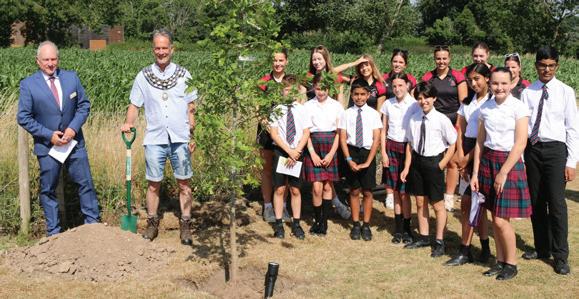
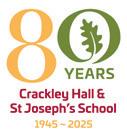
Former pupils attend St Joseph’s Mass 2025
The Mayor of Kenilworth plants an oak tree July 2025
Crackley Hall Today
As part of the wider Princethorpe Foundation, Crackley Hall continues to grow and flourish today and now accommodates nearly 300 pupils including those attending its own on-site nursery, Little Crackers, which is extending its provision to take babies from nine-months-old from January 2026.


The school is renowned for its pastoral care, has an enviable reputation in academic attainment, sporting achievement and the performing arts. It prides itself upon preparing children for their secondary school of choice, which in most cases is the Foundation’s senior school, Princethorpe College, and providing them with the skills, learning and experiences which will put them on the road to happy and fulfilled lives – a Foundation for Life!
Acknowledgements
With thanks to all those who have helped with the production of this booklet: Kathy Hahn for sending in the memories and photos of Catherine Binns (Harrop), Sarah Taylor for sending in the memories of Eileen Hunt, Gillian Thornton, Mary Taylor, Rachel Taylor, Noreen Thornhill, Alex Darkes, Ed Hester and Anna Bond.
This third edition of A History Of Crackley Hall & St Joseph’s Convent School has been updated by The Princethorpe Foundation Archive and Marketing Teams to mark the 80th Anniversary. Every reasonable care has been taken to provide an accurate history of the schools. However, the authors acknowledge that some inaccuracies may remain. If you know of any corrections which could be made to a subsequent printing of this booklet please email archives@princethorpe.co.uk.
Photographs have been sourced from both the Foundation Archives and the Union of the Sisters of Mercy GB Archives. September 2025
Whole school photo 2023
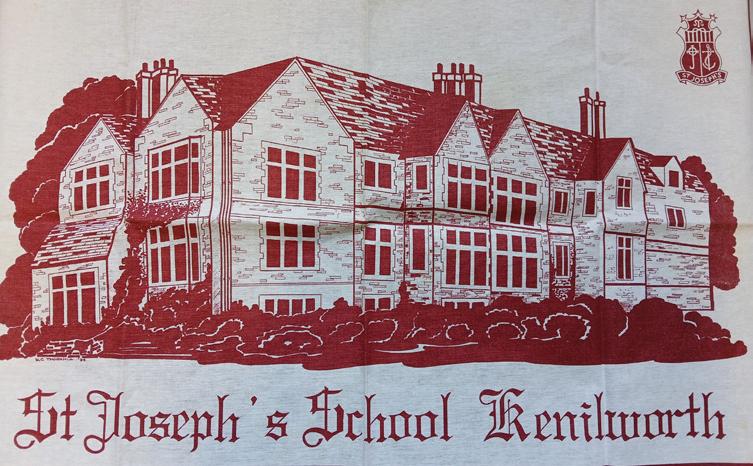
St Joseph’s Park, Kenilworth CV8 2FT
Telephone: 01926 514444 email: post@crackleyhall.co.uk crackleyhall.co.uk
The Princethorpe Foundation, Company registered in England & Wales and Limited by Guarantee Number 4177718. Registered Charity Number 1087124. Registered Office: Princethorpe College, Princethorpe, Rugby CV23 9PX. © The Princethorpe Foundation 2025.
